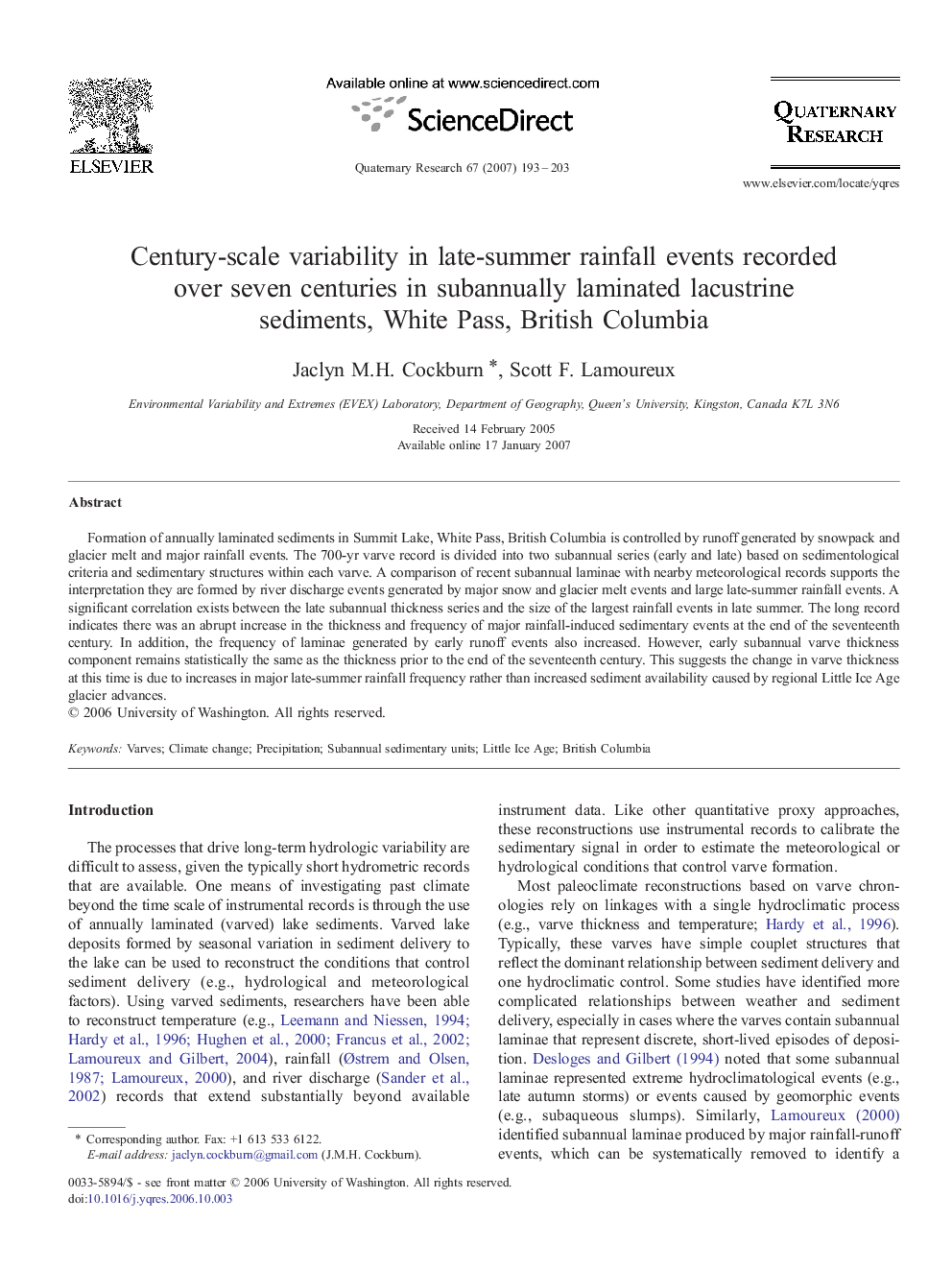| Article ID | Journal | Published Year | Pages | File Type |
|---|---|---|---|---|
| 1045886 | Quaternary Research | 2007 | 11 Pages |
Abstract
Formation of annually laminated sediments in Summit Lake, White Pass, British Columbia is controlled by runoff generated by snowpack and glacier melt and major rainfall events. The 700-yr varve record is divided into two subannual series (early and late) based on sedimentological criteria and sedimentary structures within each varve. A comparison of recent subannual laminae with nearby meteorological records supports the interpretation they are formed by river discharge events generated by major snow and glacier melt events and large late-summer rainfall events. A significant correlation exists between the late subannual thickness series and the size of the largest rainfall events in late summer. The long record indicates there was an abrupt increase in the thickness and frequency of major rainfall-induced sedimentary events at the end of the seventeenth century. In addition, the frequency of laminae generated by early runoff events also increased. However, early subannual varve thickness component remains statistically the same as the thickness prior to the end of the seventeenth century. This suggests the change in varve thickness at this time is due to increases in major late-summer rainfall frequency rather than increased sediment availability caused by regional Little Ice Age glacier advances.
Related Topics
Physical Sciences and Engineering
Earth and Planetary Sciences
Geology
Authors
Jaclyn M.H. Cockburn, Scott F. Lamoureux,
